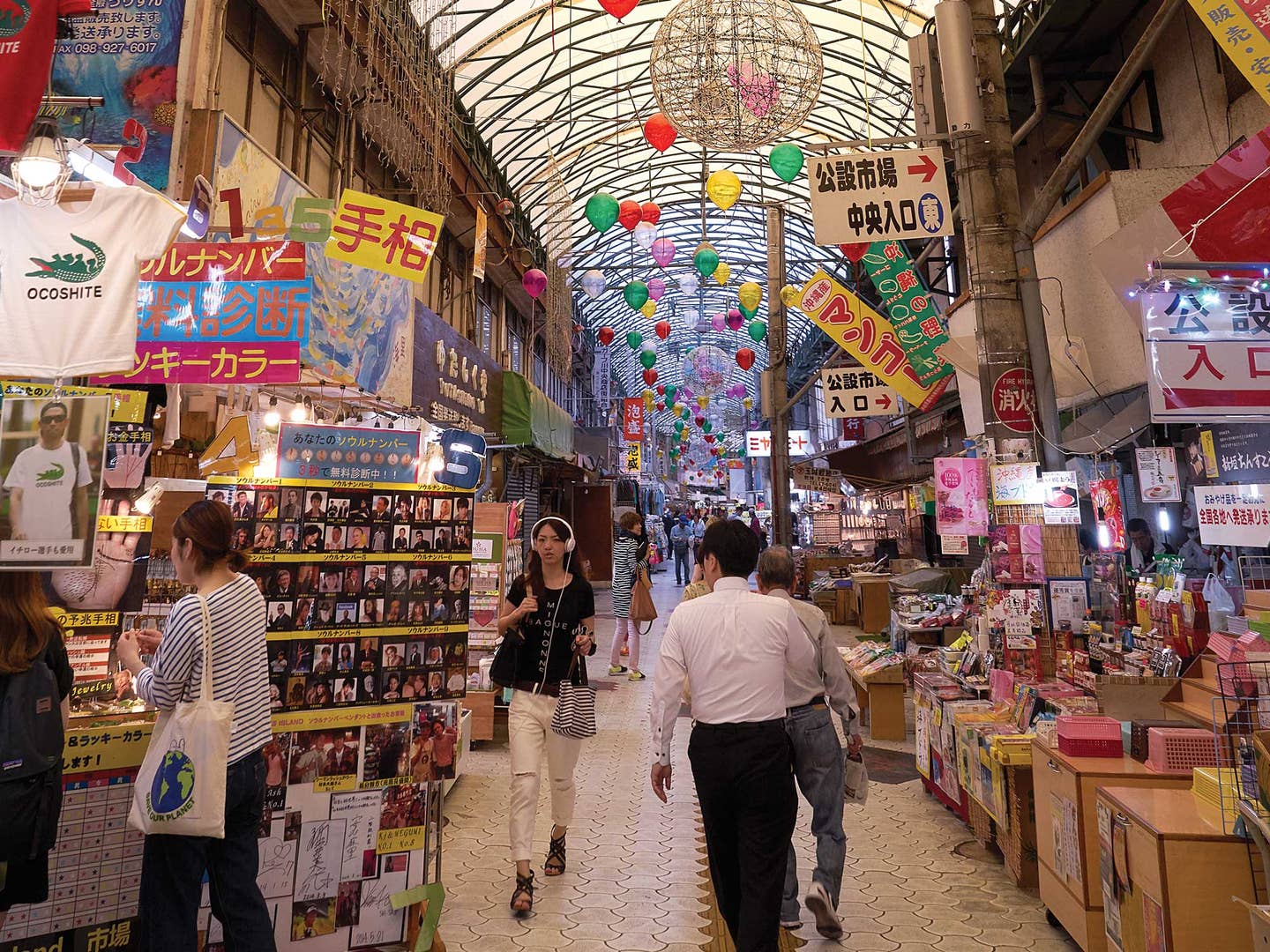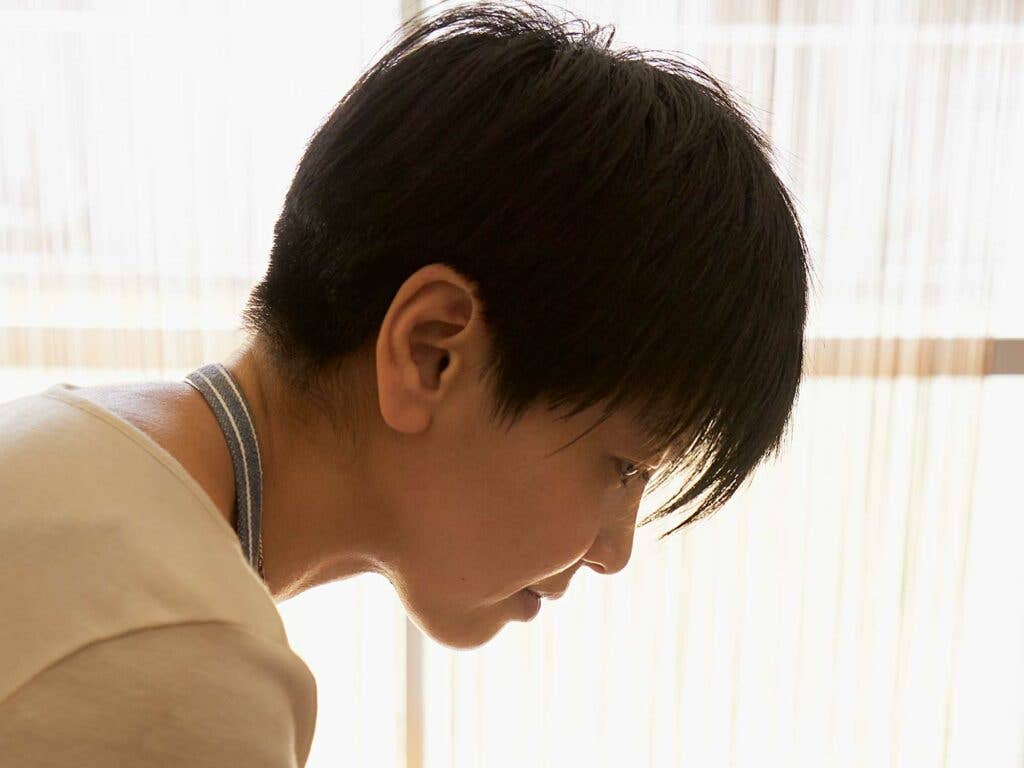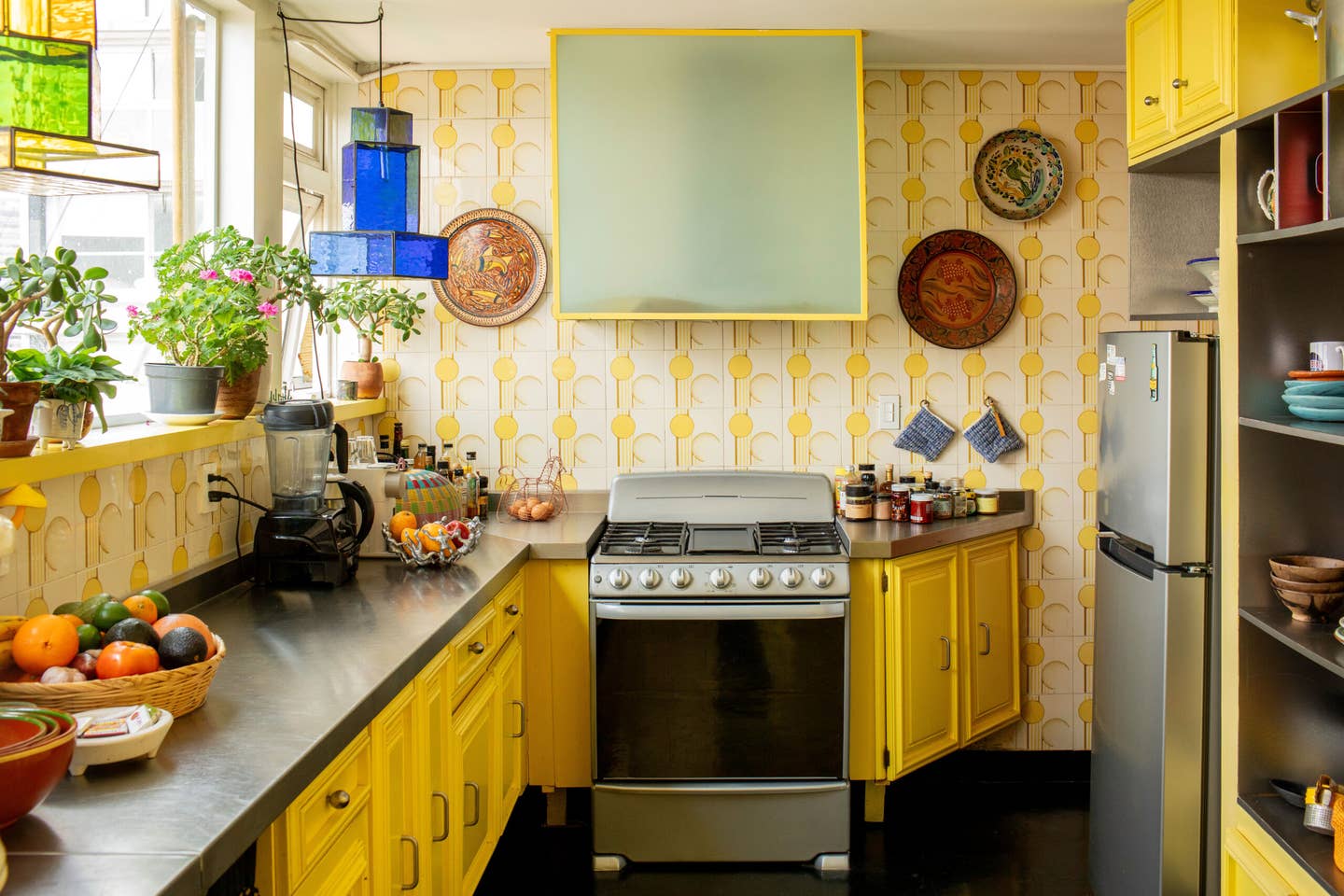
Why the Food in Okinawa’s Not Like Anything in the Rest of Japan
Laurie Woolever tastes and cooks her way through the unique landscape and culinary heritage of this remote and atypical Japanese archipelago
My first meal in Okinawa, a Japanese prefecture known for the extraordinary longevity of its people thanks to a traditionally vegetable-intensive diet devoid of processed foods, was a crispy and insanely delicious fried thing, more chicken hand than chicken finger, purchased at a Lawson konbini (convenience store). For dessert, I ate all of the smoky, dark brown Okinawa sugar from my hotel room tea service, then drank a cold Orion, the local beer, in my bathtub at Ryukyu Onsen Senagajima, where I spent my first few days napping off jet lag and soaking in an outdoor onsen (or hot spring) overlooking dramatic rock outcroppings on the fringes of the East China Sea. The polyglot cuisine, lush flora, and laid-back vibe of this extraordinary subtropical island chain, once the independent Ryukyu Kingdom, make it seem, at times, more like Hawaii or Southern California than Japan.
Japan-obsessed Western chefs and writers have tended to ignore Okinawa in their pilgrimages, and there are woefully few English-language resources about the cooking of the region, which has been shaped by Okinawa's history of trade with (and in some cases, occupation by) China, Malaysia, Korea, the Philippines, Portugal, and the U.S.
Writer Matt Goulding spent nine months in Japan in the service of his recent, indispensable gastro-travel guide, Rice, Noodle, Fish: Deep Travels Through Japan's Food Culture, covering more than 5,000 miles on the ground, but says, "Truth is, I never made it to Okinawa. The food was so different, and ultimately a diversion from the larger central themes drawn out by the mainland cuisine." Even chef Roy Yamaguchi, whose mother is Okinawan, said that before he opened his first restaurant there last spring, "I'd not really spent much time in Okinawa," which he called "the lost child of Japan."
Until recently, the sum of my own knowledge about Okinawa had come from multiple adolescent screenings of The Karate Kid, Part II and a glance at a handful of dry nutrition guides. I decided to go and see for myself this part of Japan that everyone else had been skipping over in favor of Tokyo, Kyoto, and Hokkaido. I would visit donut stands and izakayas and cafés and konbini, wander the markets and streets and farm fields, but I also wanted to learn by doing, from the people who knew the food best, so I lined up three cooking classes, each with a different teacher, wrapped up my knives and notebooks, and took a long-haul flight.
A hotel breakfast buffet can be decadent and gut-busting, but the one I encountered on the island of Senagajima was long on tofu, fish, vegetables, soups, and tea. The ubiquitous bitter melon, or goya, a high-fiber, vitamin C-packed digestive aid that lowers blood glucose, was available to guests in four forms: raw, sautéed with carrots, deep-fried into chips, and cooked into a sweet jam to be spread on alarmingly labeled "embryo bread."
After a run around the island, with a pause to watch a youth baseball game in progress, I had my first bowl of Okinawa soba at Anjina Beach Café, adjacent to the wide, shallow bay between Senagajima and Okinawa-honto, the prefecture's main island, where windsurfers take advantage of sharp breezes. Unlike mainland Japan's buckwheat-based noodles, springy Okinawa soba is made from wheat flour and eggs. The broth is a pork-enriched dashi, the bowl completed with sweet braised pork belly (rafute) or loin ribs (soki), sliced fish cake, red pickled ginger, and scallions. Served alongside is koregusu, a condiment of tiny hot peppers suspended in awamori, a strong Okinawan spirit distilled from Thai long-grain rice that's a popular beverage in Okinawa's izakayas. This particular bowl also contained asa, bright green, micro-fibrous sea lettuce that reminded me of something found inside one's bathing suit after a long day at the beach.
I spent the next afternoon at the Ishikawa Dome in Uruma City, in the center of the main island, drinking Orion, eating freshly cooked yakisoba with pork belly, sausage, cabbage, and carrots and watching a series of relatively bloodless Okinawa-style bullfights, in which two massive animals pushed each other around the ring by their horns until one retreated in defeat, each living to fight again.
Later, I visited Urizun, a dark, smoky izakaya in the capital city of Naha, to begin my deep dive into goya champuru, a bitter melon stir-fry with eggs, tofu, and sometimes pork or Spam, seasoned with dashi and soy sauce and garnished with bonito flakes. Champuru means "mix," referring to the jumble of ingredients and flavors—by turns bitter, salty, sour, sweet, and earthy—that compose this defining Okinawan dish. And the next day I was back in the center of Okinawa-honto, in the town of Kin, home of the U.S. Marine base Camp Hansen and self-proclaimed birthplace of "taco rice," which is your basic Middle America-style ground beef taco, with white rice standing in for the tortilla. Like Spam musubi in Hawaii and budae jjigae in Korea, taco rice is a Western-Asian hybrid dish, born of a strong American military presence here, and people in Okinawa love it. The plate I tried at King Taco was tasty, but once was enough—I didn't feel the need to spend any more time passing the Old El Paso.
Okinawan ingredients
The islands’ local ingredients inclued shima-dofu (a type of tofu with salted fish) and goya (bitter mellon)
That evening, I began cooking. My first instructor was a young man named Atsushi Miyagi. He teaches architecture at Sci-Tech College in Naha by day and home cooking by night. Atsushi lives in Urasoe, a small city just outside of Naha that's home to the Orion beer brewery; Camp Kinser, another Marine Corps base; and eight smoky pachinko parlors that throb with blazing lights. I'd found Atsushi on govoyagin.com, where visitors to Japan connect with locals who will help them harvest sugarcane, attend sumo wrestling practice, or, in my case, learn to cook rafute and goya champuru, if not from actual centenarians, then from young Okinawans armed with their grandmothers' recipes.
Before the lesson, we stopped at Kanehide super-market to buy shima-dofu, Okinawan tofu that's coagulated in a magnesium chloride brine, making it saltier than average. It also has a low water content, which lends it a firm consistency. It was nearly 7 p.m., but the shima-dofu was still warm, indicating, said Atsushi, that it had been made within the hour.
Atsushi's bikes and surfboards stood in a corner of the kitchen. In lieu of a stove, he'd plugged in a single-induction burner on a small dining table. He was rather shy, his English good but not great, and his teaching style was more demonstrative than hands-on as he silently filled a pot with water, added a few splashes of awamori and a dash of salt and placed it on the burner, cut the skin from the pork, and slipped it into the pot. I'm something of a nervous talker, especially with strangers, but I'd already used up all the polite questions I could muster on the car ride over, and as the steps he took with the food were utterly self-evident, I could think of no new ones to ask. I knew that the pork would take at least 90 minutes to braise, and that goya champuru was a rather quick dish, so I descended into a language-barrier-induced awkwardness panic spiral when Atsushi, likely feeling the same, turned on the television in the next room. Sugary Japanese pop music stood in for the long silences between bits of instruction, and eventually he handed me a spoon to scoop out the bitter pith of the goya, while he peeled and sliced ginger for the pork braise.
It occurred to me that this experience, while less structured than I'd anticipated, was not unlike cooking with family—in the home, as it's needed, with no pretense. I had a slug of awamori when Atsushi stepped away for a moment, just as I might have nipped a sip of Carlo Rossi when learning to cook with my mother as a teenager. The goya champuru we made together was the best of my trip.
Atsushi Miyagi; Okinawa, Japan
Architecture professor and sometime Okinawan cooking instructor Atsushi Miyagi demonstrates how to cook rafute—sweet braised pork belly—in his home kitchen
Nao Ogura-Gayler, whose one-woman school is the aptly named Cooking Class with Nao, was my second teacher. She lives and teaches in Yomitan, where Torii Station Army Base and Kadena Air Base supply a steady stream of students eager to cook with warty-looking goya and dried seaweed. A former marketing professional, Nao teaches introductory Japanese cooking and sushi classes in addition to Okinawan dishes. She sharpened her Japanese culinary skills in London as a student of Narihito and Yoshie Matsunaga, whose consulting company, Mat UK, has helped fuel the rise of sushi restaurants and takeout in Europe.
Over the course of a happy, collaborative afternoon, listening to both traditional sanshin music and Massive Attack, we cooked through a menu that offered variations beyond the ubiquitous rafute and goya champuru. Mozuku, a brown, slimy-but-crisp seaweed, was in season and being harvested at nearby Fuchaku Beach, so we made a sunomono of it and topped it with foamy grated mountain yam. We sliced goya for a spicy, sesame-inflected Korean namul, and later mixed goya with seafood for tempura. We crumbled shima-dofu by hand and tossed it with peanut butter, miso, and micro-thin ribbons of intensely bitter umjana leaf.
The standout of the day was abura miso, or "fat miso," for which we diced and rendered pork belly, cooked it with red miso and awamori, and combined a dab of it with hot dashi, somen noodles, sprouts, and pepper threads to make a deeply satisfying meal in less than half the time it takes to make a pork stock or braise a slab of belly. The salty miso helps preserve the pork, explained Nao, who also uses it in onigiri (rice balls) and to accompany fried eggplant and peppers.
A View of Japan's "Lost Child"

Fish Stall at Makishi Public Market; Okinawa, Japan
Fish Stall at Makishi Public Market; Okinawa, Japan
Sata Andagi at Makishi Public Market; Okinawa, Japan
Piles of sata andagi—a type of donut—in flavors like sesame and caramel tempt customers at this public marketplace.
Nao Ogura-Gayler; Okinawa, Japan
Nao Ogura-Gayler, left, instructs the author in the ways of authentic Okinawan cuisine.
Ganaha Chikusan Agu Village; Okinawa, Japan
Observe, feed, and eat black Agu pigs at this outdoor village with an on-site restaurant.
As we sat and slurped somen, I told Nao that I couldn't wait to add abura miso to my own kitchen repertoire. Using seasoned bits of meat as flavoring agents for vegetables and grains is a relatively novel approach for Western cooks looking to Asia for inspiration.
Nao grew up in Saitama Prefecture, near Tokyo, and moved to Okinawa with her British husband only six years ago, but in that time she's observed, especially among younger generations, a turn away from the traditionally moderate, vegetable-driven Okinawan diet toward larger portions, more meat, processed foods, and heavy drinking. While many of her students are American, European, and Australian expats, she has also taught Okinawan dishes to natives. She said, “Local people have asked me how to make Okinawa soba from scratch, which is pretty ironic.”
The curriculum at Yonner Food, the Naha cooking school where I had my final lesson, was originally designed for tourists, but my teacher, Kazumi Kayo, said that many of her students, too, are local Okinawans seeking to learn the pork belly and goya lessons they may have missed in homes full of dashi powders and Western conveniences. Kazumi studied with Okinawa food authority Kayoko Matsumoto and perfected her recipes with the help of her mother-in-law.
Kazumi and her translator, Saki Kinjo, guided me through the Makishi Public Market, a multi-story series of connected arcades on busy, garish Kokusai Street, which is equal parts wet market, food hall, and souvenir center. Familiar with chefs' tales of 2 a.m. visits to Tokyo's Tsukiji seafood market, I was surprised to see, at 10 a.m., that some Makishi merchants were just opening their stalls, stacking mini pineapples, and setting fish out on ice.
Kazumi Kayo; Okinawa, Japan
Instructor Kazumi Kayo is one of the local cooking experts who are preserving Okinawa’s classic dishes.
"We start later in Okinawa," said Kazumi with a smile, noting that the market stays open until 8 p.m. I'd just availed myself of an approximately 950-course Japanese breakfast at my hotel, but as we gathered goya, pork, just-shaved bonito flakes, warm shima-dofu, and dried seaweed for the lesson, I couldn't resist a freshly fried sata andagi, a cake-style Okinawan donut rolled in black sesame seeds and Okinawan sugar. As a palate-cleanser, I sampled tiny, salty bubbles of umi budo, the "green caviar" seaweed cultivated in Okinawa and the Philippines.
Shopping done, Kazumi drove us to her teaching kitchen and we got to work on a simple asa and tofu soup, kufa jushi (rice studded with shiitakes and pork), rafute, and goya champuru. Having tried several variations of goya champuru by this point, I was surprised when Kazumi instructed me to slice an onion and grate a carrot for the dish. She explained that their sugars would counter the strong bitterness of the goya; it was a concession for Western palates, and while I felt slightly infantilized by the well-meaning gesture, I filed the knowledge away for when I'd try to sell goya champuru to my family back home. I also took careful notes on the green goya juice we mixed with the juice of an endemic citrus fruit called shikwasa and sweetened with a bit of simple syrup, as I knew that, with a splash of gin, it would make an excellent Okinawan cocktail: at once healthy and indulgent, with the right balance of bitter, sour, herbal, and sweet.
A Taste of Okinawa
Bitter Melon and Tofu Stir-Fry with Pork Belly and Eggs (Goya Champuru)
Get the recipe for Bitter Melon and Tofu Stir-Fry with Pork Belly and Eggs (Goya Champuru) »
Green Gin Cocktail
The extracted juice from bitter melons takes the place of common bittering agents, such as Campari, in this floral, lime-punched cocktail. Get the recipe for Green Gin Cocktail »
Braised Pork Belly with Leeks and Ginger
Awamori, a lightly sweet rice distillate, is used to blanch and cook—as well as coat—tender pork belly, resulting in a sticky, umami-rich sauce. Get the recipe for Braised Pork Belly with Leeks and Ginger »
Noodles in Dashi with Miso-Coated Pork Belly
Red miso paste, more fermented than its blond counterparts, adds piquancy to pork belly cooked with brown sugar, mirin, and sesame seeds.
An Okinawa Primer
Where to Eat
Urizun
Choose from more than 100 varieties of awamori and sample Okinawan specialties served in tapas-sized portions.
388-5 Asato, Naha
Nishimachi
This 15-seater serves an impeccable bowl of Okinawa soba, with tender pork belly and kamaboko heaped atop chewy fresh wheat noodles.
1-20-13 Nishi St., Naha
Ramen Koryu Naha Matsuyama
Okinawa is soba country, but there's great Hakata-style ramen to be had at Koryu. Skip the lines at the Kokusai-dori branch and head to the quieter Matsuyama location.
1-8-6 Matsuyama, Naha
Where to Stay
Ryukyu Onsen Senagajima
Tiny Senaga Island is home to a few cafés, a baseball park, and this hushed upscale resort.
174-5 Senaga, Tomigusuku
Agritourism
Ganaha Chikusan Agu Village
Observe, feed, and eat black Agu pigs at this outdoor village with an on-site restaurant.
69 Okawa, Nago
Learn to Cook
Cooking Class with Nao
Nao Ogura-Gayler teaches Japanese standards and Okinawan specialties, and offers dedicated sushi-rolling classes.
1414-61 Sobe, Yomitan
Yonner Food
After a tour of Makishi Public Market, Kazumi Kayo and Miyagi Yuko help students prepare classic Okinawan dishes, including seaweed soup, rafute, and a refreshing goya-based juice.
902-0064 Libra House, room 303, 2-5-8 Yorimiya, Naha
Voyagin
A web hub for booking immersive experiences in Asia, including Atsushi Miyagi's three-course Okinawan cooking seminar, taught in his home.
Keep Reading
Continue to Next Story










